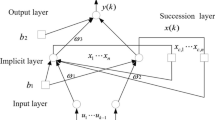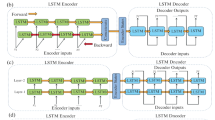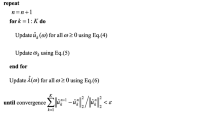Abstract
Water level prediction is critical for optimizing available water resources and sustainable use. We propose a new deep learning hybrid model for water level prediction. The model uses Extreme−point symmetric mode decomposition (ESMD), Variational Modal Decomposition(VMD), Wavelet Signal Denoising(WSD) and Echo State Network(ESN) to predict water level at four hydrological stations in the lower Yellow River. The model constructs the ESMD−VMD−WSD−ESN hybrid model by using the respective strengths to extract the most important features in the predictor variables. The prediction effectiveness of the combined quadratic decomposition model is explored by comparing it with the ESN, WSD−ESN and ESMD−WSD−ESN models. The results show that the quadratic decomposition−based combined model ESMD−VMD−WSD−ESN has the best prediction, ESMD−WSD−ESN is the second best, WSD−ESN and ESN are relatively poor. The Mean Absolute Error of the ESMD−VMD−WSD−ESN model is only 0.16 m, the Mean Absolute Percentage Error is 0.18% and the Nash–Sutcliffe efficiency coefficient reaches 0.91. In summary, the combined model of quadratic decomposition model has good applicability and stability in monthly water level prediction.













Similar content being viewed by others
Availability of data and materials
Data and materials are available from the corresponding author upon request.
References
Alsova OC (2016) An adaptive algorithm for hydrological time series forecasting based on the selection of an analogue−period. SPIIRAS Proc 3(46):27–34
Bian N (2018) Application of improved gray system in water level prediction of waterways. China Water Transp 05:75–80
Cui BB, Chen XY, Song R (2015) Application of EMD threshold filtering in fiber optic gyroscope drift signal denoising. J Opt 35(2):0207001
Devi MS, Rahamathulla V (2020) Prediction of groundwater level in district level by implementing machine learning and advanced softcomputing techniques. Artif Intell Syst Mach Learn 12:11–13
Dragomiretskiy K, Zosso D (2014) Variational mode decomposition. IEEE Trans Signal Process 62(3):531–544
Gu QH, Hu Y, Tu ZY (2021a) Research on PSO−SVR−LSTM based water level prediction model. Jiangxi Hydraul Sci Technol 47(4):278–284
Gu QH, Hu Y, Tu ZY (2021b) Research on water level prediction model based on PSO−SVR−LSTM. Jiangxi Hydraul Sci Technol 47(4):278–284
Huang N, Long S, Wu M, Hh S, Zheng Q, Nc Y (1998). The empirical mode decomposition and the Hilbert spectrum for nonlinear and non−stationary time series analysis. Proceedings of the Royal Society. Mathematical, physical and engineering sciences. 454: 903–99595
Jaeger H (2001) The “echo state” approach to analysing and training recurrent neural networks−with an erratum note. Bonn, Ger: Ger Nat Res Cent Inform Technol GMD Tech Rep 148(34):13
Jiang X, Wang J, Shi J, Shen C, Huang W, Zhu Z (2019) A coarse−to−fine decomposing strategy of VMD for extraction of weak repetitive transients in fault diagnosis of rotating machines. Mech Syst Signal Process 116:668–692
Liu Y, Yang G, Li M, Yin H (2016) Variational mode decomposition denoising combined the detrended fluctuation analysis. Signal Process 125:349–364
Liu Z, Tan M, Zha X (2017) Hydrological time series forecasting based on WD−RSPA model—a case study of Makou station and Shenzhen station. Acta Entiarum Nat Univ Sunyatseni 56(5):119–126
Liu YX, Fan QX, Shang YZ, Fan QM, Liu ZW (2019) Short−term water level prediction method for hydropower station based on LSTM neural network. Adv Sci Technol Water Resour 39(2):56–60
Mehmet Ö, Eyyup EB, Ömer E, Volkan H (2020) Comparison of wavelet and empirical mode decomposition hybrid models in drought prediction. Comput Electr Agric. https://doi.org/10.1016/j.compag.2020.105851
Miao Y, Zhao M, Lin J (2019) Identification of mechanical compound−fault based on the improved parameter−adaptive variational mode decomposition. ISA Trans 84:82–95
Mital U, Dwivedi D, Brown J, Faybishenko B, Painter S, Steefel C (2020) Sequential imputation of missing spatio−temporal precipitation data using random forests. Front Water. https://doi.org/10.3389/frwa.2020.00020
Nigam R, Nigam S, Mittal SK (2014) Modelling tropical river runoff: a time dependent approach. Sci Cold Arid Reg 3:247–256
Páliz LP, Zapata−Ríos X, Campozano PL (2021) Application of neural network models and ANFIS for water level forecasting of the salve Faccha dam in the Andean zone in northern Ecuador. Water 13:2011
Roy DK, Biswas SK, Saha KK, Khandakar FIM (2021) Groundwater level forecast via a discrete space−state modelling approach as a surrogate to complex groundwater simulation modelling. Water Resour Manag 35:1653–1672
Song YQ, Deng SC, Lu YG (2019) The application of VMD with K value optimization in bearing fault diagnosis. Meas Control Technol 38(04):117–121
Su WC, Zhu ST, Liu T, Jin C (2019) Fault diagnosis of motor bearings based on ESMD entropy fusion and PSO−SVM. Large Electr Mach Hydraul Turbine 5:24–28
Sun D, Zhang H, Guo Z (2018) Complexity analysis of precipitation and runoff series based on approximate entropy and extreme−point symmetric mode. Decomposition 10:1388
Tang M, Long Y, Lei XH, Tan FQ, Zhang Z (2020) Long short term memory network (LSTM) based water level prediction for the south−north water diversion central line. China Rural Water Hydropower 10:189–193
Wan YL, Li XC, Zhou HB (2019) Short−term traffic flow prediction based on WPD−PSO−ESN. Highw Traffic Sci Technol 236(8):144–151
Wang JL, Li ZJ (2013a) Extreme−point symmetric mode decomposition method for data analysis. Adv Adapt Data Anal 5(3):1350015
Wang JL, Li ZJ (2013b) Extreme−point symmetric mode decomposition method for data analysis. Adv Adapt Data Anal 05:1350015
Wang YF, Huang YP, Xiao M, Xiong B, Zhou SS, Jin Z (2022) Research on LSTM Yangtze river flood season water level prediction method based on attention mechanism. J China Three Gorges Univ (nat Sci) 44(3):13–19
Wen Q, Yu Z (2017) Study on short−term water level forecasting in the middle reaches of Yangtze river. China Water Transp 02:46–52
Xie HJ, Li JR, Dong Y, Li J, Sun ZX (2020) Effect of wavelet basis and threshold parameters on the denoising effect of transient electromagnetic signals. J xi’an Univ Sci Technol 40(04):682–690
Xu GY, Zhu J, Si CY, Hu WB, Liu F (2019) A combined model for hydrological time series prediction based on CNN and MC. Comput Mod. (11): 23–28+33
Xu ML, Wang IW (2021) A study on time series prediction based on improved differential evolution and echo state network. J Autom 7:1589–1597
Yang CH, Peng X, Zhao YZ, Wang X, Fu KL, Li YD, Li PL (2019) Prediction model to analyze the performance of VMD desalination process. Comput Chem Eng. https://doi.org/10.1016/j.compchemeng.2019.106619
Yao Z, Xu JP, Kong JP, Liu SB (2018a) Research on GA−Elman based river water level prediction method. J Yangtze River Sci Res Inst 35(9):34–37
Yao Z, Xu JP, Kong JL, Liu SB (2018b) Research on river water level prediction method based on GA−Elman[J]. J Yangtze River Sci Res Inst 35(9):34–37
Yu Z (2018) Research on water level prediction in waterways based on time series analysis. China Water Transp 10:148–150
Zhang WY, Qu ZX, Zhang KQ, Mao WQ, Ma Y, Fan X (2017) A combined model based on CEEMDAN and modified flower pollination algorithm for wind speed forecasting. Energy Convers Manag 136:439–451
Zhang X, Miao Q, Zhang H, Wang L (2018) A parameter−adaptive VMD method based on grasshopper optimization algorithm to analyze vibration signals from rotating machinery. Mech Syst Sig Process 108:58–72
Zhu H, Wang J, Chen X Application of RBF neural network model in groundwater depth prediction. Yellow River. 42(03):50
Funding
This work was supported by the Key Scientific Research Project of Colleges and Universities in Henan Province (CN) [grant numbers 17A570004].
Author information
Authors and Affiliations
Contributions
All authors contributed to the study conception and design. writing and editing: XZ and HC; chart editing: YW; preliminary data collection: JS, Yx. All authors read and approved the final manuscript.
Corresponding author
Ethics declarations
Conflict of interest
None.
Ethical approval
Not applicable.
Consent to participate
Not applicable.
Consent to publish
Not applicable.
Additional information
Publisher's Note
Springer Nature remains neutral with regard to jurisdictional claims in published maps and institutional affiliations.
Rights and permissions
Springer Nature or its licensor (e.g. a society or other partner) holds exclusive rights to this article under a publishing agreement with the author(s) or other rightsholder(s); author self-archiving of the accepted manuscript version of this article is solely governed by the terms of such publishing agreement and applicable law.
About this article
Cite this article
Zhang, X., Chen, H., Wen, Y. et al. A new water level prediction model based on ESMD−VMD−WSD−ESN. Stoch Environ Res Risk Assess 37, 3221–3241 (2023). https://doi.org/10.1007/s00477-023-02446-9
Accepted:
Published:
Issue Date:
DOI: https://doi.org/10.1007/s00477-023-02446-9




